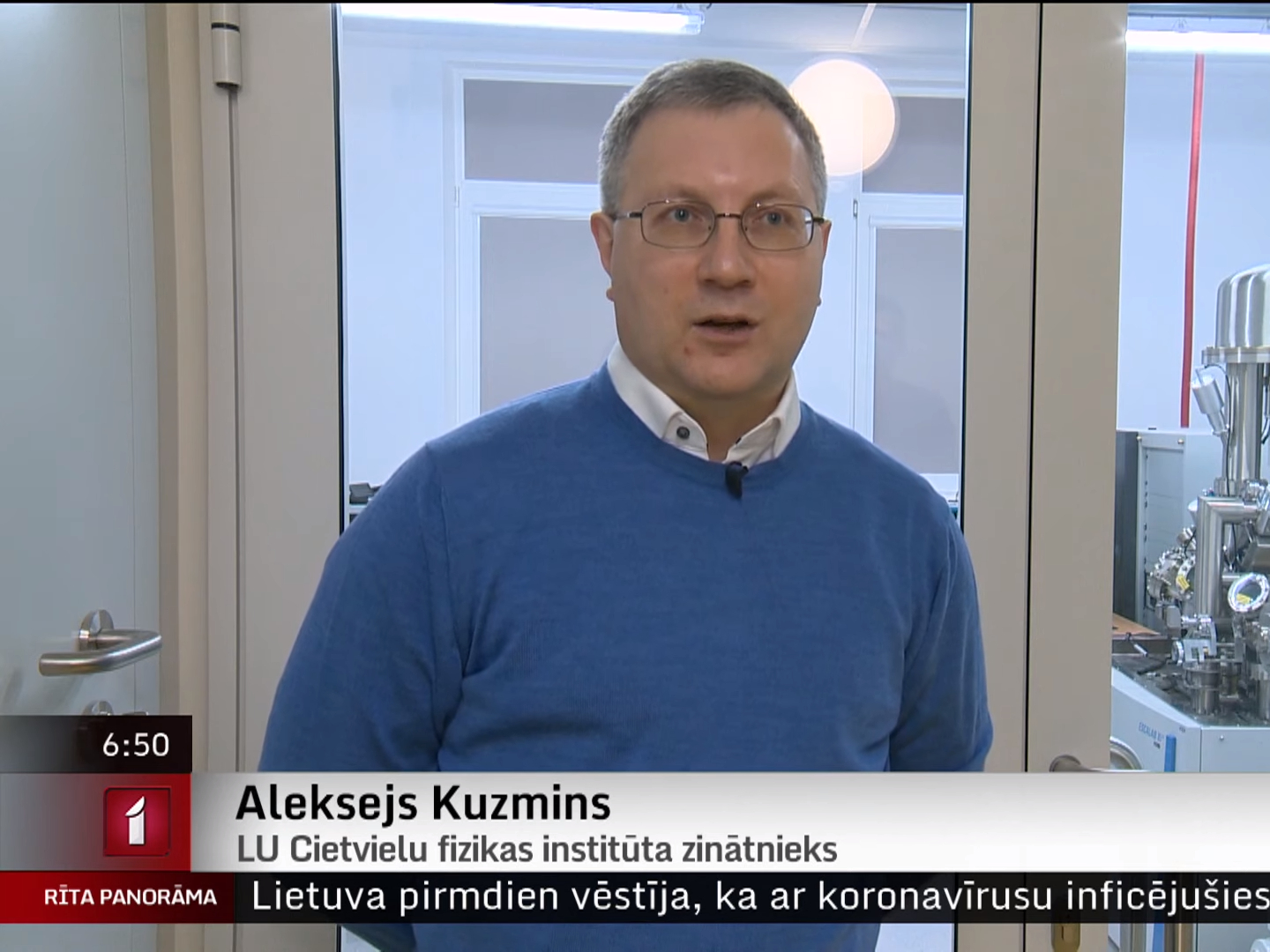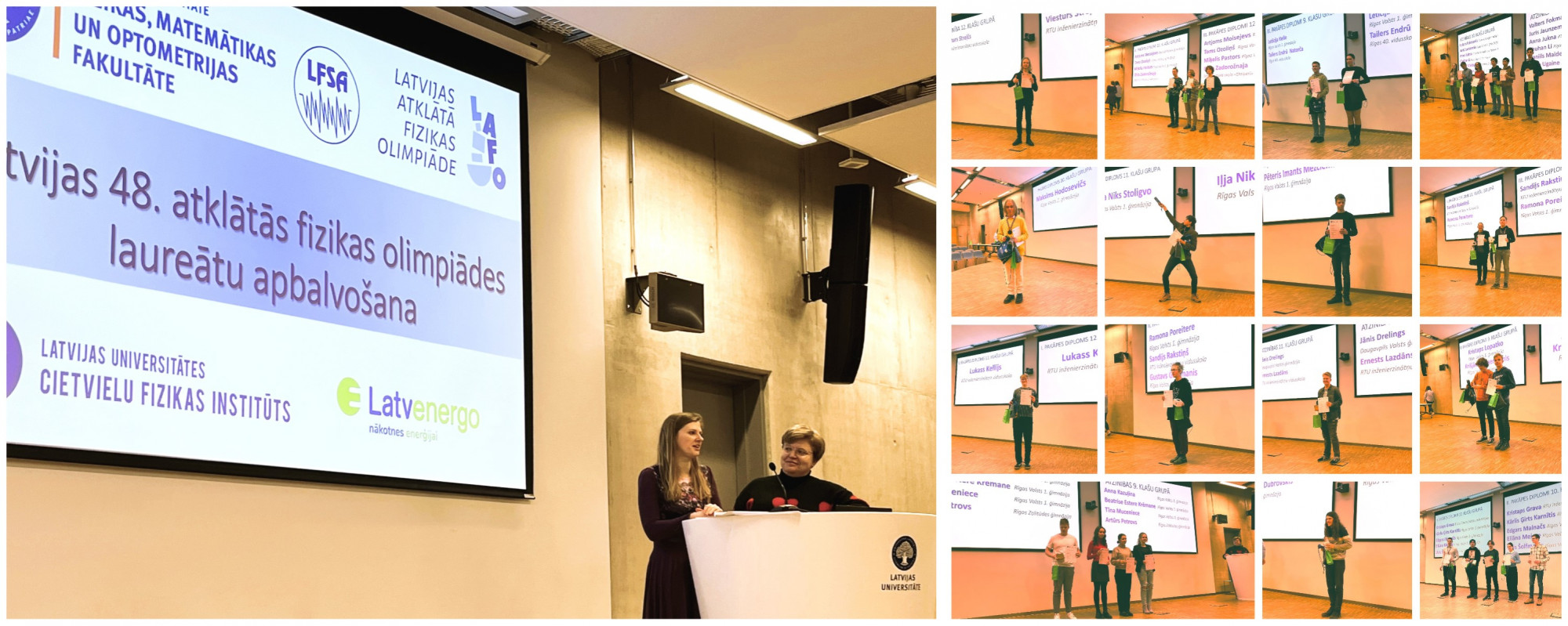On January 11, National Television (LTV1) morning news program “Rīta Panorāma” broadcasted a story about one of the most significant achievements in theoretical science in Latvia in 2021 carried out by the ISSP UL’s researchers from EXAFS Spectroscopy Laboratory (EXAFS Lab) explaining the influence of the local atomic structure of molybdates and tungstates on their thermochromic and magnetic properties. The synthesized powder materials created by the researchers could be used as temperature sensors in the future. Their potential applications could include food and vaccine storage and transportation. For example, using packaging with such markers could allow customers to be sure that the food is not damaged and has been stored at the appropriate temperature. Such markers are a cheaper and simpler alternative to be used during the transportation of vaccines (such as some of the Covdid-19 vaccines) to be sure that the temperature has been low enough.
EXAFS Lab is engaged in structural research of the materials at the atomic level using synchrotron radiation X-ray absorption spectroscopy. Researchers use advanced theoretical calculations and simulations of experimental data to gain insight into the structure-property relationships in materials. EXAFS Lab scientists can be proud of a discovery related to a class of smart materials such as molybdates and tungstates.
Researcher Inga Pudža explains: “Smart materials are materials that respond to changes in the environment. For example, they can respond to changes in temperature, pressure, electric, and magnetic fields. Our research was more related to the thermochromic properties of the material, namely the color change when it was heated or cooled, and its magnetic properties.”
It is possible to change the atomic structure of different materials by changing the temperature or the pressure. To apply the pressure method, very high pressure is usually required, but the materials studied by ISSP UL scientists are different.
Alexei Kuzmin, the head of the EXAFS Lab explains: "The materials we study in our laboratory are sensitive to light pressure. When you press the synthesized sample with your finger, it changes color, which means that you can change the position of atoms in this sample with your fingers, which is a rare case. By heating the material, it regains its initial atomic structure and could be used again.”
Inga Pudža continues: "When it comes to temperature-sensitive products, vaccines are a topical issue right now. Some vaccines need to be stored at low temperatures. One of our synthesized samples changes color at -70 degrees, which is consistent with the storage conditions required for one of the vaccines. At a time when the vaccines may have reached room temperature during transportation, our sample (powder) would indicate that the temperature has exceeded the desired conditions and the product may be damaged.”
Such sensors, based on research at the ISSP UL, would be a much cheaper solution than currently used ones with relatively expensive temperature measurement systems. In addition, the powder material obtained and studied in Latvia could also be used in food packaging, for example, in determining whether meat, milk, and fish products have been stored at the right temperature during the delivery process.
Video story in Latvian available here.
Article about the smart powder material in Latvian is available here.



